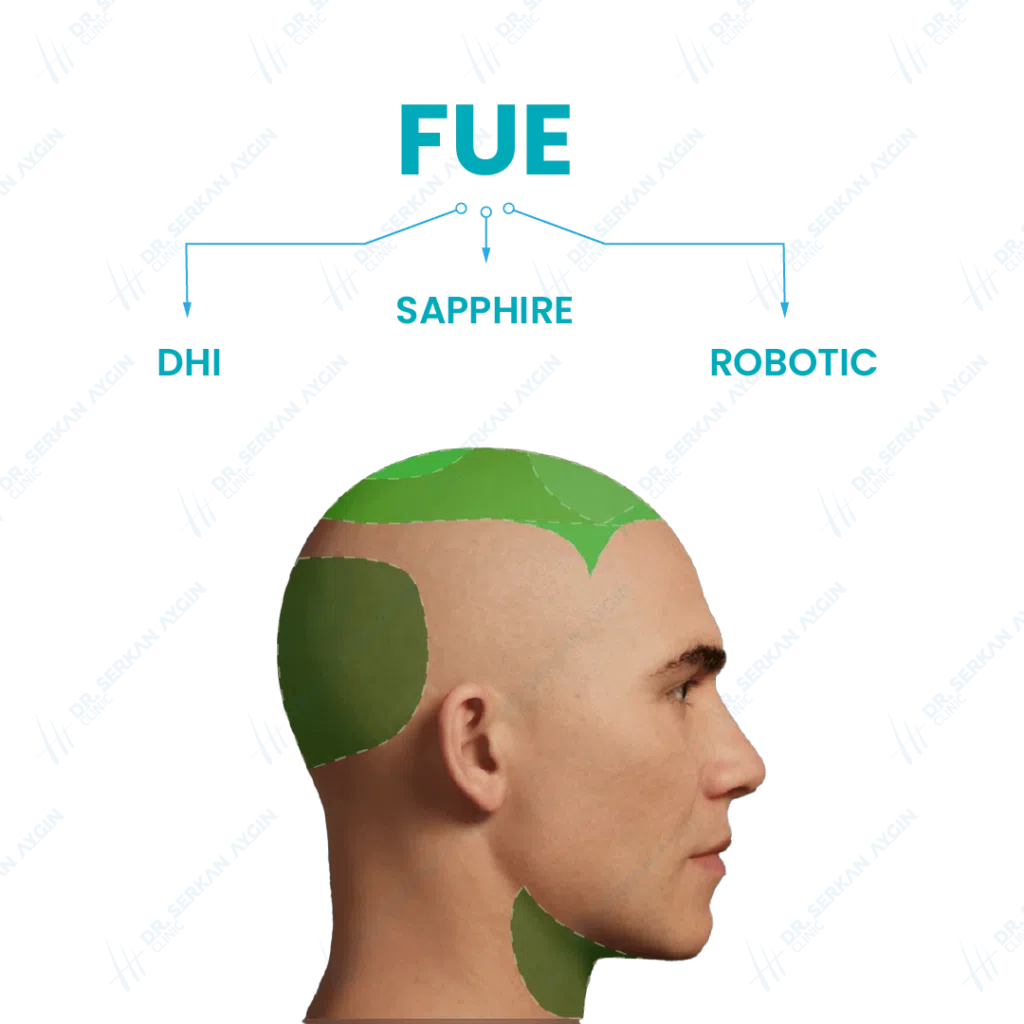Of course, anyone who is about to undergo such an operation seeks to conduct comprehensive research on all its aspects, especially the question that always comes to mind and plays a pivotal role in determining the patient’s decision, which is “Is hair transplantation painful, or is there hair transplantation without pain?” Therefore, Dr. Serkan Aygin will try to answer this question through this article; But in order to understand this issue more clearly, we must know the basics of the hair transplantation process to know when the pain will be
The most comfortable hair transplantation technique: FUE technique

Since the FUE technique is characterized by minimal surgical intervention, it is one of the most comfortable methods for performing hair transplantation operations, and it is an alternative to the strip technique, but there are also other techniques, each of which is distinguished by its unique characteristics
Sub-techniques of the FUE technique in hair transplantation
The Choi pen technique, or what is known as the direct hair transplantation technique, is the process of transplanting follicles that have been extracted according to the technique using the Choi pen. Other sub-techniques include robotic technology, FUE technology, andIn addition, you may hear terms such as no-shave hair transplantation, painless hair transplantation, and needle-free hair transplantation. Although the characteristics of these techniques differ, they are all based on the basic principles of FUE and aim to make the transplantation process more comfortable for the patient and less painful.
FUE Hair Transplantation
Hair transplantation using FUE is performed on two main areas. The first area is the donor area from which the follicles are extracted, and the second area is the transplant area. Both areas require minor surgical intervention that requires anesthesia.Follicular Unit Extraction
The process of extracting follicular units is performed using a micromotor device equipped with fine heads. These fine heads are used to separate The follicles are removed from the surrounding tissues, a process that requires high precision and local anesthesia to ensure patient comfort. Pain relief is not limited to anesthesia alone, but patient comfort can also be improved by reducing the speed of rotation of the device, and using sharp heads made of surgical steelFollicle Implantation
Before the follicles are implanted, small channels are opened in the recipient area either using steel needles as in the Choi pen technique that combines opening and implantation at the same time, or using sapphire blades that provide a smoother surface than steel, which reduces the possibility of complications such as skin or tissue damage